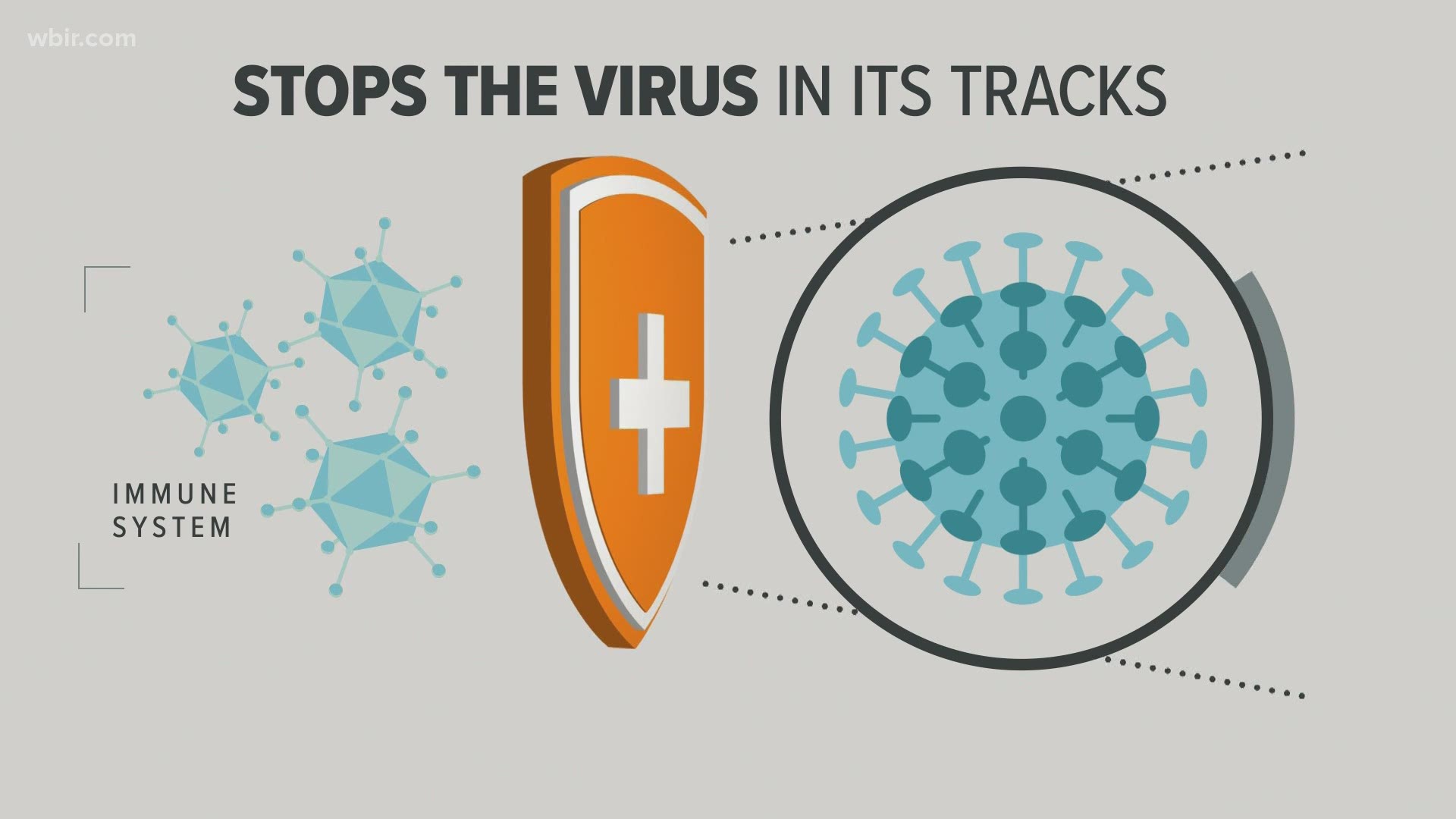The race is on to develop a vaccine that can fight off COVID-19.
With more than 100 experimental COVID-19 vaccines in development from labs around the globe, there are many questions about the vaccine and its creation, especially as a handful near the finish line.
After all, finishing this race means saving lives.
At its simplest function, a successful vaccine will teach our immune system how to fight off COVID-19, which keeps it from making us sick and blocks it from spreading to someone else.
There are different ways a vaccine can do this.
Typically, we would think of something like a flu shot, which contains a dead or weakened version of the virus, tricking our immune systems into thinking it’s being invaded and creating protective antibodies.
These antibodies give our bodies the tools to protect themselves from the real virus when a person is exposed. This is called immunity.
For an inside look at a vaccine trial: click here
Traditional vaccines typically take upwards of 5 years to develop, and no one wants to live in pandemic conditions for five more years.
Fortunately, the race for a COVID-19 vaccine has a fast-track contender, the mRNA vaccine, which has been developed in a matter of months.
It doesn’t contain the virus at all. Instead, this vaccine targets cells in your body. Essentially the mRNA vaccine is a messenger, delivering information to a cell’s brain and teaching proteins inside nucleic acid how to produce their own antibodies.
If the coronavirus enters the body, the cells are on the defensive and are prepared to destroy it.
So we know what the vaccine does, but how will we know if it works?
We are currently at the clinical trial stage when it’s testing on humans, and there are three phases in the process.
Phase 1: A small number of patients get the vaccine. Scientists check for safety, dosage and whether it is stimulating the immune system.
Phase 2: Hundreds more patients are added to the study. Safety and effectiveness are measured.
Phase 3: If phase 2 is a success, thousands of patients can be added. This important phase tells researchers how many people become infected compared to those who received the placebo.
Throughout all phases, the trial is a double-blind study, which means neither the researchers nor the patient know whether they are being given the COVID-19 vaccine or a placebo injection of saline. This helps ensure results are not skewed by anticipated responses to the vaccine.
Right now, just a few of the dozens of experimental COVID-19 vaccines in the race have made it to phase three. While this is promising news, health officials say there has to be more than one winner to protect the world and save lives.
“There are 8 billion people in the world and most of these vaccines require two doses. We potentially could need up to 16 billion doses. No single vaccine can be produced in that quantity, in the near future. So, we want lots of vaccines to be effective so we can have everybody producing as much as they can and get everyone that wants a vaccine one available as soon as possible,” said Dr. Bill Smith with Volunteer Research Group.
As to rumors circulating online about microchips being included in the vaccines to track us, researchers said that is not possible and not true.

